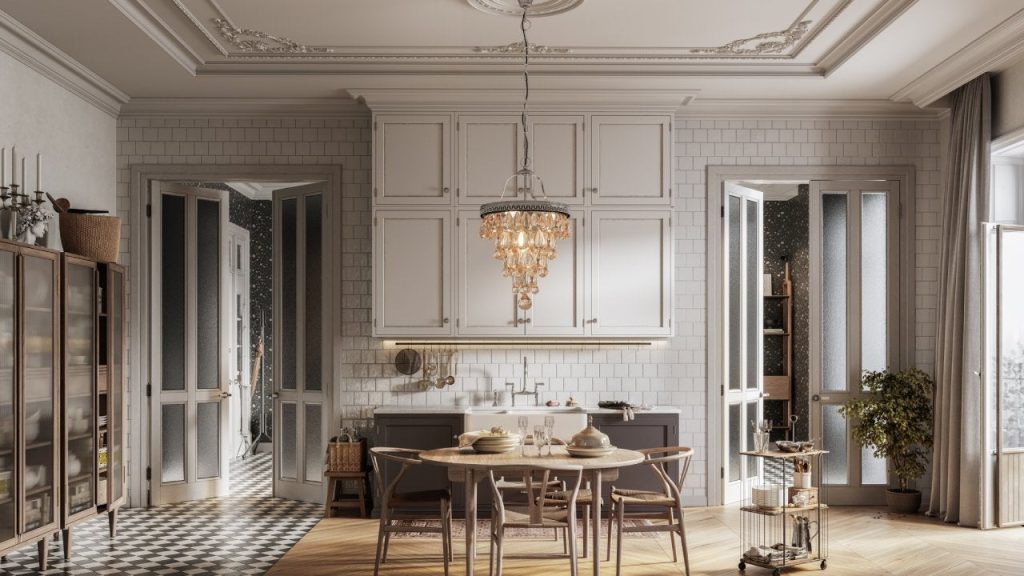Key takeaways
- In a real estate transaction, a fixture refers to a permanent feature, item or object that is affixed to the property and not easily moved.
- Fixtures are considered real property, rather than personal property, and as such they transfer their ownership with the home.
- In situations where the seller wants to take a fixture with them, compensation or negotiating the purchase price can help resolve any disagreements.
When a home is purchased by a new owner, some things are obviously included in the transaction: the building itself and its structural elements — walls, roof, doors — and secondary structures, like a garage. And some things are obviously not included: furniture, clothing, artwork, books.
However, what can be less clear is the status of certain other things in the home, like appliances or window treatments. Do they stay or do they go? That’s where the concept of real estate fixtures comes in. If you’re buying or selling a home, it’s important to be able to identify what fixtures are, so you can avoid disputes involving them.
What is a fixture in real estate?
In real estate, a fixture refers to a feature, item or object that is permanently attached or affixed to the property in some way — either part of the house itself or the surrounding grounds. It may not have been part of the original structure, but it’s been installed to stay in place; in other words, it’s not easily portable.
The MARIA test
To identify whether something is a fixture, agents and other real estate pros often apply a sort of test — a set of measures or characteristics to judge whether something counts as a fixture. It’s known by the acronym MARIA:
- Method of attachment: Items permanently attached to the property, using cement for example, are usually considered fixtures.
- Adaptability: Items adapted to a specific purpose in the home and that have become an essential piece of the home, such as floating flooring or a pool cover, are considered fixtures.
- Relationship of the parties: Who installed the item can help determine whether something is a fixture. If the homeowner installed it, for example, it’s more likely to be considered a fixture than if it was put there by a rental tenant.
- Intention: The intent of the person who put the item in the home matters. If they intended it to be a permanent or long-term feature of the home, such as a stove or washer/dryer, it’s considered a fixture.
- Agreement: If the transaction contract states that something will remain in the home or is a fixture, it becomes one.
Fixtures vs. personal property
Real estate fixtures are a type of “real property,” as opposed to personal property. That means they’re considered part-and-parcel of the physical estate. They’re included in the property’s value when calculating things like property tax, and they typically transfer their ownership along with the home.
In contrast, personal property belongs to the individual owner and is generally portable. Homeowners are free to take personal property with them when they sell. You can use the MARIA acronym above to determine what in your home is a fixture and what’s personal property, and ask your real estate agent if you’re still not sure.
Examples of real estate fixtures
Fixtures can be large or small — the key is how affixed they are, how permanent a part of the home they seem to be. And even if they could be moved, would it make sense to move them? (For example, why take a pool cover if the pool itself stays?)
Common items that are considered fixtures
- Built-in appliances, like a wall oven or dishwasher
- Light fixtures like chandeliers and sconces
- Ceiling fans
- Curtain rods and window blinds/shades
- Towel racks
- Built-in bookshelves
- Smoke detectors
- “Hard” landscaping elements, like a pergola, gazebo or fire pit
Common items that are not fixtures
- Furniture
- Rugs
- Non-built-in shelving or bookcases
- Curtains or drapes
- Loose yard decorations, like birdhouses or string lights
Items that are often disputed
Because it’s not always crystal-clear what is a fixture and what isn’t, they can cause a lot of issues in real estate transactions. Some items often fall into a gray area and might cause a dispute between a buyer and seller if they are not clearly defined. Examples include:
- Major appliances like stove/oven ranges, freestanding washer/dryers and refrigerators
- Wall-mounted tech like TVs and speakers
- Window treatments
- Outdoor recreation equipment, like basketball hoops or swing sets
- Above-ground swimming pools
- Plants and shrubs
Window treatments are a particularly confusing area: You may have noticed that curtain rods are considered fixtures, while curtains themselves are not. Again, this reflects the element of permanence — the rods are considered part of the window frame, while drapes can be easily detached. Wall-mounted tech works in a similar manner: The brackets have to stay, but the device itself can go.
Avoiding fights over fixtures
Different states and local governments might have particular regulations about what constitutes a fixture. These will be enumerated in standard real estate contracts. Generally speaking, if a seller wants to take a fixture with them — say, a chandelier, an oft-disputed item — they have to replace it for the buyer, installing some sort of light fixture in its place.
To avoid problems on closing day, be sure to put it all in writing. “If you are ever in doubt about fixtures in a real estate transaction, you can always specifically call them out in the purchase and sale agreement,” says Doug Greene, owner of Philadelphia-based homebuying company Signature Properties. “There you would identify what stays with the property and what goes with the seller.”
If there’s a disagreement over what qualifies, try to work it out another way. If the buyer wants something, they should ask for it — the seller might agree to include it in the sale. Or, if the seller wants to keep something, they might compensate the buyer for it. For example, if they love their Sub-Zero fridge, they could offer the buyer money to put toward a new refrigerator. If there are a lot of expensive fixtures the seller wants to take with them, they could even knock some money off the purchase price.
Ultimately, the best thing to do is to be very clear and specific in your contract, so that neither party is left wondering what is a real estate fixture and what isn’t.
Read the full article here
















